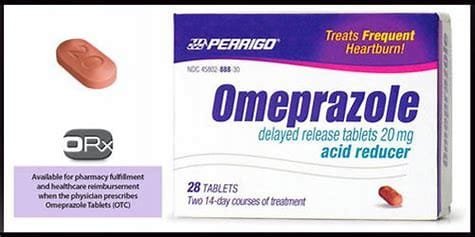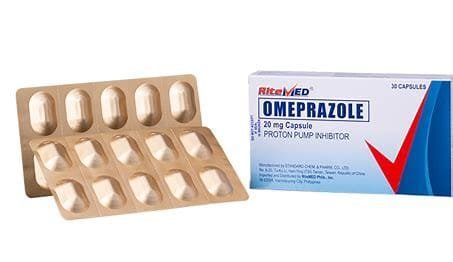Introduction
Omeprazole is one of the most popular drugs in the proton pump inhibitor class. The primary aim of the drug is to treat diseases caused by increased stomach acid activity, including gastroesophageal reflux disease, peptic ulcer disease, and Zollinger-Ellison syndrome. Knowledge on the formulation, uses, advantages, and disadvantages of Omeprazole can be quite helpful in determining health decisions appropriately.

What is Omeprazole?
Omeprazole makes its effect in the mucosa of the stomach, where it acts by inhibiting the enzyme proton pump, which is responsible for the secretion of gastric acid. The results of this inhibition are a decrease in the amount of gastric acid that eventually heals up damage in the esophagus and stomach lining, reduces heartburn, and prevents complications such as ulcers and esophageal cancer.
The drug is available in prescription and OTC forms, based on the dosage involved and also based on the condition it is being used to treat. Prescription-strength Omeprazole often involves more severe cases or diagnoses, while other OTC forms are prepared for heartburn and indigestion that are only needed for short-term exposure.
Uses of Omeprazole
The main uses of Omeprazole are for conditions resulting from an overproduction of stomach acid:
Gastroesophageal reflux disease:
This is the condition commonly referred to as GERD, and it is when stomach acid frequently flows back into the esophagus and causes heartburn and irritation. Omeprazole assists by working by controlling the production of acids; therefore, it leaves to heal the esophagus and prevent occurrence of acid reflux in the future.
Peptic Ulcer Disease:
This is the formation of sores within the lining of the stomach or the ascending upper part of the small intestine. Excessive acid in the stomach irritates and exacerbates these sores. Omeprazole acts by minimizing acidity inside the stomach so that sores can heal.
Zollinger-Ellison Syndrome:
It is one of the rare disorders where duodenal or pancreatic tumors cause excessive secretion of stomach acid. Omeprazole might be able to manage excessive acid production and prevent complications such as ulcers.
Erosive Esophagitis:
It is a condition that arises when the esophagus inflames and erodes due to the presence of acid. Controlling acid productions through omeprazole might make it possible to prevent further damage to the esophagus.
Helicobacter pylori infections:
Omeprazole is used in combination with antibiotics to treat certain infections caused by a bacteria called Helicobacter pylori (H. pylori) that can cause ulcers.
Other Conditions:
Omeprazole is used in the treatment of dyspepsia, or indigestion, and to prevent ulcers in patients who are at risk for developing stomach ulcers due to prolonged treatment with nonsteroidal anti-inflammatory drugs (NSAIDs), such as ibuprofen.
Preparation and Dosage
Omeprazole comes in various formulations, including:
Capsules:
They are delayed-release capsules that dissolve only when they reach the part of the intestines that is past the stomach, thereby avoiding breakdown by stomach acid.
Tablets:
Like capsules, the delayed-release tablets dissolve within the intestines to allow proper absorption of the drug.
Oral Suspension:
For patients who are unable to swallow both capsule and tablet forms, Omeprazole is available in a powder form that is intended to be used as an oral suspension. It should be mixed with water before use.
Injectable:
Omeprazole can be injected intravenously in a hospital setting, as it cannot be administered per oral route in certain cases.
The available doses contain 10 mg, 20 mg, and 40 mg, and this all depends upon the case. The over-the-counter drugs contain 20 mg and are meant to be used for only 14 days.
Benefits of Omeprazole
Effective Acid Control: Omeprazole is highly effective in controlling acid production, providing relief from symptoms like heartburn, regurgitation, and abdominal pain. It is considered one of the most potent PPIs available.

Healing and Preventive Ability: This drug is an antagonist of the symptoms but is healing for the mucous membrane of the esophagus and stomach lining in conditions of GERD and peptic ulcer. Even in later occurrences of ulcers, it prevents them in patients taking NSAIDs.
Wide Availability: Omeprazole can be found both over the counter and with a prescription in numerous markets, which makes it accessible for a patient looking for treatment of a wide range of stomach acid-related conditions. Over-the-counter products help to quickly avail treatment for lesser symptoms without significant cost.
Long-Lasting Relief: Omeprazole provides long-term relief for at least 24 hours after one dose, which is convenient for a patient who needs continuous management.
Disadvantages of Omeprazole
Side effects: Omeprazole, like any other medication, has side effects. However, the most common ones are headaches, nausea, diarrhea, abdominal pain, and constipation. Less common complications have been rarely reported, which include long-term use of the drug leading to complications such as kidney disorders, deficiency of vitamin B12, and hypomagnesemia.
Risk of abuse: Omeprazole should not be used for too long a time or inappropriately, particularly without medical supervision. Abuse may be followed by an increased rate of fractures that are due to the reduced absorption of calcium and is associated with increased risks of Clostridium difficile infection, at least according to some reports.
Rebound Acid Hypersecretion: Some patients may experience a rebound effect. When Omeprazole is abruptly discontinued, there is a sudden resurgence of stomach acid secretion, and as such, symptoms such as heartburn may return. Dosage tapering is hence often recommended to be done gradually.
Other Possible Interactions with Other Drugs Omeprazole may interact with other drugs to either weaken or strengthen them, but this has been found to be the case with warfarin—a blood thinner—and ketoconazole—an antifungal agent. All use of drugs must be reported to a physician before Omeprazole can be prescribed.
Not for immediate relief:
It does not act like antacids, neutralizing stomach acidity to restore immediate relief. The drug takes up to 1 to 4 days to provide its full effect, which is a compelling reason against immediate relief.
Conclusion
Omeprazole is a potent and most used medicinal drug in the treatment of many diseases involving excess acid secretion, such as GERD, peptic ulcers, and Zollinger-Ellison syndrome. Its main mechanism of healing is a reduction in acid secretion; thus, omeprazole not only heals but also offers symptom relief. However, like most drugs, omeprazole has its limitations, including possible side effects, long-term complications, and interactions with other drugs.
Most patients undergoing long-term use will find that the benefits of Omeprazole outweigh the risks if taken properly and in concordance with a doctor’s instructions. Patients are still advised to observe its potential for overuse and contact their doctor if further long-term use or reaction occurs.




